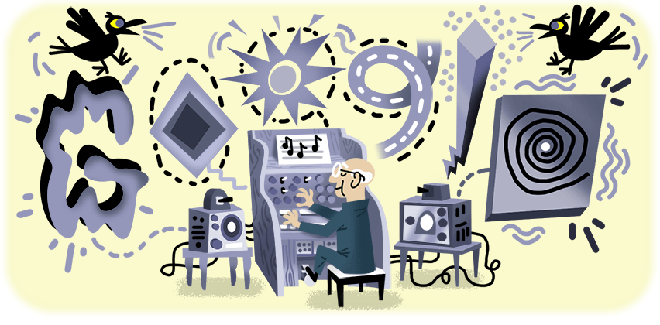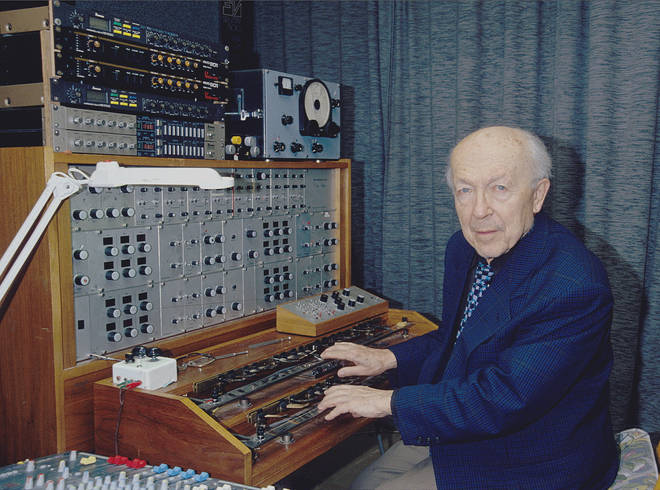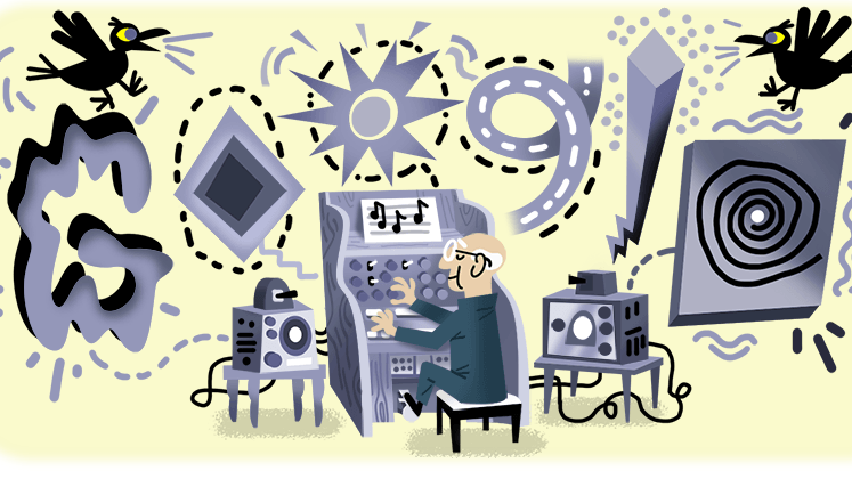18 July 2022, 22:28 | Updated: 18 July 2022, 22:30

Picture:
Google Doodle
Oskar Sala was an innovative composer and physicist – classically trained, and later a pioneer in the world of electronic music…
Today’s Google Doodle marks what would have been the 112th birthday of Oskar Sala, a brilliant musical mind known for developing his own instrument, the mixture-trautonium – an early electronic synthesiser.
Sala was born in Greiz, Germany, in 1910. As a child he studied piano and organ, and performed classical piano concerts. In 1929, he was accepted at the Berlin Conservatory to study piano and composition.
While at the conservatory, Sala closely followed the experiments of Dr Friedrich Trautwein, and learned to play his musical invention: the Trautonium.
When Sala first heard the monophonic instrument – an instrument that can only produce one note at a time – he was fascinated by the technology. “His life mission,” today’s Doodle explains, “became mastering the trautonium and developing it further which inspired his studies in physics and composition at school.”

Picture:
Getty
Inspired by Dr Friedrich’s work, Sala went on to develop his own instrument, the mixture-trautonium, which was capable of playing several musical lines simultaneously. With this invention, the sound of Sala’s electronic music was set apart from his peers’.
Sala had found his niche. He studied physics at the University of Berlin between 1932 and 1935, where he helped develop a new form of Trautonium – the Volkstrautonium. In 1935 he built a portable model, the Concert Trautonium.
In 1944, as the Second World War was raging, Sala was called on to join the German Army on the Eastern front, where he was injured.
Read more: Who was Amanda Aldridge? Google Doodle celebrates composer and opera singer

Picture:
Getty
After the war, Sala went back to his recording studio in Berlin and moved into TV and film music, creating sound effects for productions including Alfred Hitchcock’s 1962 film The Birds, in collaboration with early electronic composer Remi Gassmann. Once again using the mixture-trautonium, Gassmann and Sala created noises like bird calls, hammering and window slams.
Sala had worked with Gassmann a few years prior on Paean (1960), one of the first ballets set to electronic music.
Sala was given plenty of awards for his film scores – but he never won an Oscar. In 1995, he donated his original mixture-trautonium to the German Museum for Contemporary Technology.
“His efforts in electronic music opened the field of subharmonics,” the Doodle adds in its description of Sala. “With his dedication and creative energy, he became a one-man orchestra.”
Here’s to the legacy of a musical pioneer – Oskar Sala!


